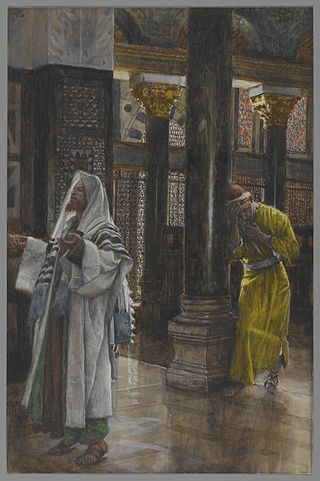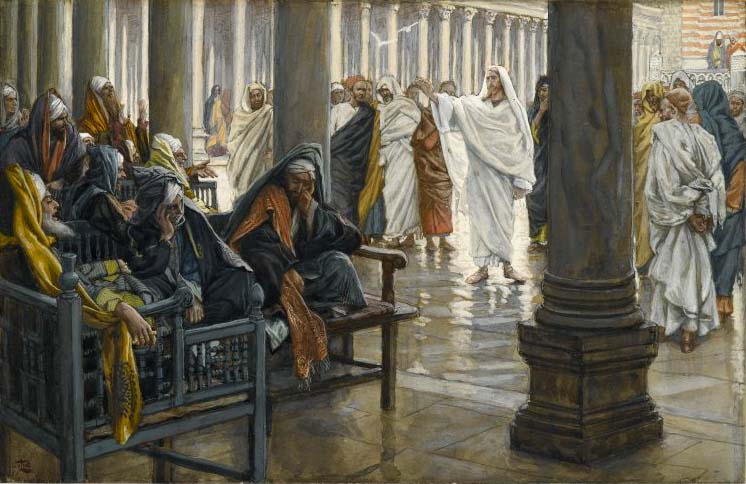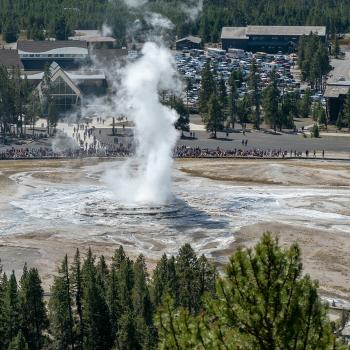
(Wikimedia Commons public domain image)
Compare Matthew 23:12; 18:4; Luke 14:11
There is a fine but very important line between the peace that the Gospel can bring, on the one hand, and, on the other, smug, complacent self-satisfaction.
Few spiritual offenses are worse than self-righteous and judgmental pride.
We should be continually on guard against it. For one thing, it’s very easy to fall into.

(Wikimedia Commons public domain image)
“It cannot be,” said Jesus in Luke 13:33, “that a prophet perish out of Jerusalem.”
Members of his family knew that the authorities in Jerusalem were plotting Jesus’ death, so they encouraged him to “go up” to the city.
He told them that he wouldn’t, yet. And then, after they had left, he did so secretly. Plainly, Jesus was capable of stratagem. He knew that he had to die, but there were other things that he still wanted to do first.

Jan Polack (d. 1519)
Los Angeles County Museum of Art
(Wikimedia Commons public domain image)
Compare Matthew 13:54; 11:27; Mark 6:2; Luke 4:22; 10:22
Jesus revered and venerated the temple, and, when he was in Jerusalem, he did some of his most important teaching there.
Some types of Christianity claim that he rejected the temple, but this is plainly mistaken.
Several things to note in this passage. Among them:
* His audience notices that he manifests wisdom and insight far beyond his human education. (7:15)
* Jesus says that one can learn the truth of his teaching in the observing of it. (7:17)
* It isn’t unchristian to judge, but that judgment must be “righteous judgment.” (7:24) (Not, I think, as easy as it might sound.)
* Some in his audience thought they knew enough historical information about him to discredit his claims. (7:27) But what they “knew” about him was incorrect.
* The time of his death wasn’t actually in the hands of those who eventually killed him. (7:30)
* Some in the audience wondered, quite rightly, “If this isn’t the Messiah, with all his miracles, what more can we possibly expect?”
And so forth.

James Tissot (Jacques Joseph Tissot, d. 1902) (Wikimedia Commons public domain)
Some may vaguely imagine in their hearts — though I doubt that they would ever expressly articulate such a thought to themselves — that, had they lived in the time of Jesus, everything would have been clear and obvious. No ambiguities. They would have been his faithful disciples.
Very plainly, though, it wasn’t so.
In these verses, a division among the people is described regarding Jesus. And those who disbelieve actually have arguments, however mistaken or wrong they may be. Moreover, those ancient critics point out, members of the social/academic/intellectual elite don’t accept Jesus’ claims.
Sound familiar?
Plus ça change, plus c’est la même chose.











